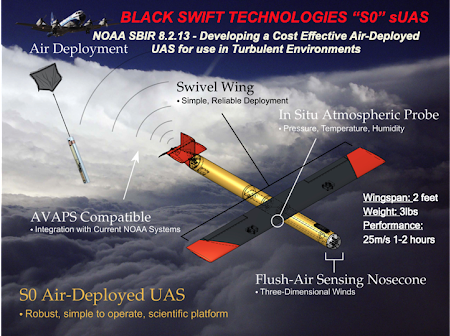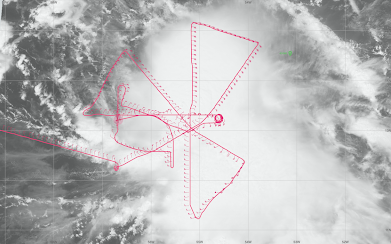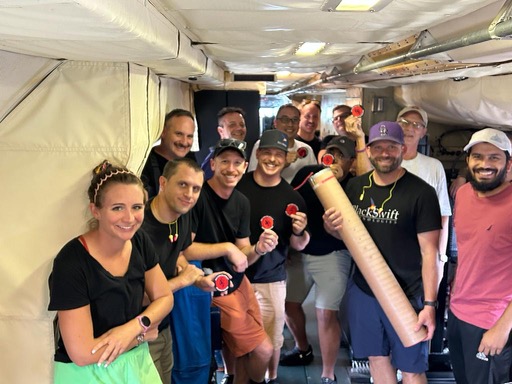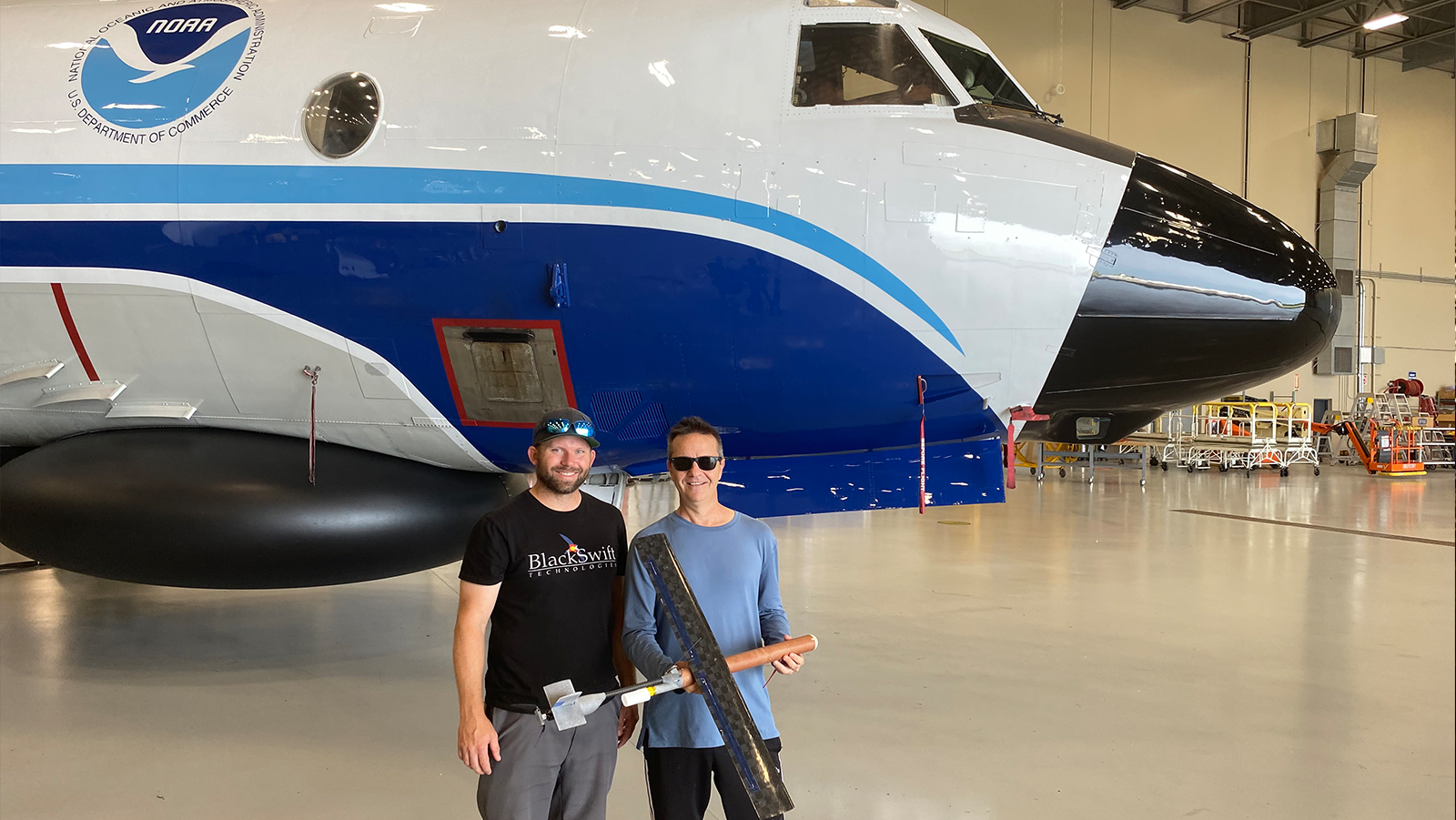Header image caption
Jack Elston (Left), CEO and founder of Black Swift Technologies and Joseph Cione (Right), NOAA Lead Meteorologist for Emerging Technologies, standing in front of the NOAA WP-3D Orion Hurricane Hunter aircraft, holding a Black Swift S0 model.
NOAA hurricane researchers successfully deployed a new uncrewed aircraft system (UAS) into Tropical Storm Tammy (2023) to measure parts of the storm too dangerous for humans to go. The Black Swift Technologies S0™ UAS was launched from the NOAA WP-3D Orion Hurricane Hunter aircraft by scientists from NOAA’s Atlantic Oceanographic and Meteorological Laboratory during missions into the storm as it strengthened and headed closer to the Leeward Islands of the Caribbean.
NOAA researchers collaborated with Black Swift to develop an instrument capable of sustaining tropical cyclone conditions, the S0. This UAS can operate in low- and medium-altitude maritime environments conducting atmospheric profiles as low as 50 ft. and up to 15,000 ft. above sea level. At 2.6 lbs, this is the lightest UAS platform ever used to successfully sample a tropical cyclone. It features various payload instrumentation that are capable of measuring atmospheric pressure, temperature, moisture, and 3-dimensional wind profiles. These actions are controlled through onboard programming and/or by aircraft-based operators.

On October 19, 2023, the Hurricane Hunters transected Tropical Storm Tammy to gather critical data from tail doppler radar and dropsondes as usual, but this time the crew also successfully launched the drone. Flying as low as 100 ft above sea level, it completed a one-hour and 11-minute mission, the second longest air deployed UAS mission ever.

“We appreciate the dedication of our partnership with Black Swift Technologies to advancing our mission of improving future hurricane forecasts and protecting lives and property.”
Joe Cione, NOAA Lead Meteorologist for Emerging Technologies
The goal is to continue to deploy Black Swift S0 UAS alongside other uncrewed aircraft, like the Altius-600, into active tropical cyclones from NOAA operational P3 missions and provide NOAA scientists with real-time, near-surface atmospheric data in and around tropical cyclones. The data collected will one day be integrated into NOAA’s National Weather Service to improve future hurricane models by understanding the storm’s track, intensity, and structure.
“Black Swift strives to solve some of the most difficult problems required to expand the use of UAS. It’s been amazing working with Dr. Cione, the P-3 team, and NOAA to build and deploy a platform that can gather data previously unavailable to forecasts from a critical part of the storm.”
Jack Elston, CEO and Founder of Black Swift Technologies
This deployment into Tropical Storm Tammy is an important look into how uncrewed systems, such as the Black Swift Technologies S0 UAS, could be a critical part of improving hurricane forecasting.

